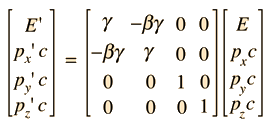(a) When there is a red or blue shift, is there an actual change in the energy of the photons or not?
(b) If there are two observers, one moving toward the light source and one away from it, they would see different red/blue shifts of the same set of photons from the same source, so that gives me a clue that actually the energy of the batch of photons is not changing, this is just some apparent effect that we are seeing. Then how can we say for both observers that the energy of the photons is proportional to the frequency? (the frequency observed by both observers is different, but it is the same batch of photons from the same light source presumably having the same energy)
(c) Assuming light is emitted by a bandgap transition, and the emitted photons have energy equal to the bandgap, then intuitively speaking, why does the motion of the emitter alter that energy?
I can understand how a number of cycles of waves can get compressed or expanded into a smaller or larger space depending on the motion of the emitter and hence change the wavelength. I can also understand how, if a gun is firing a bullet, and the gun is mounted on a fast-moving train, then the velocity and KE of the bullet will change as a result.
However, the photons travel at fixed velocity, and being massless, have no KE resulting from mass. So how is it possible that the physical motion of the emitter "relative to the observer" translates into a different energy of the photons than the bandgap energy from which they were emitted?
(d) If it is the observer that is accelerating towards the light source (e.g. the observer is in an accelerating rocket ship), then why would the energy of the distant photons change or why would the observer see a continuous change in red/blue shift?



